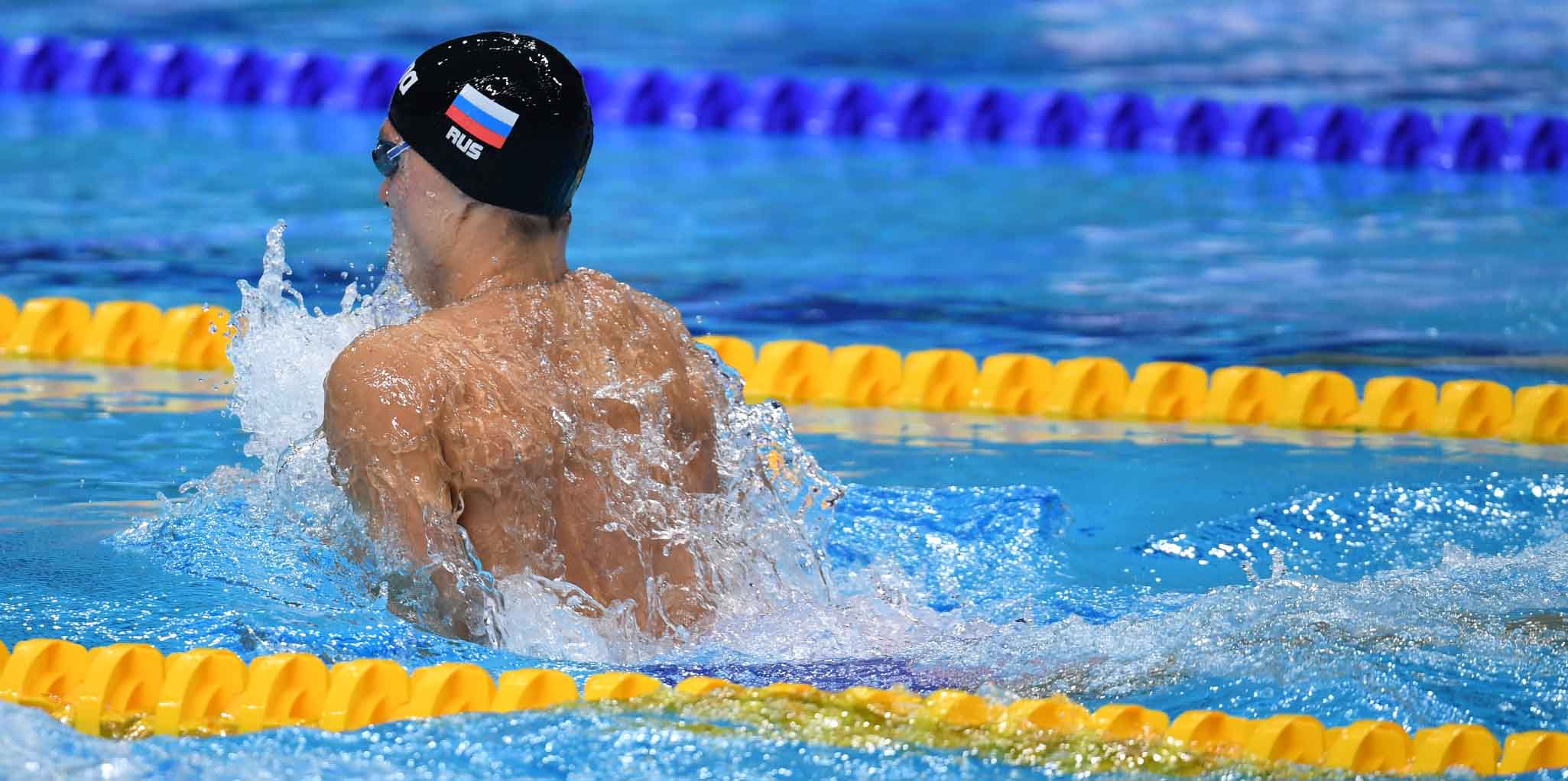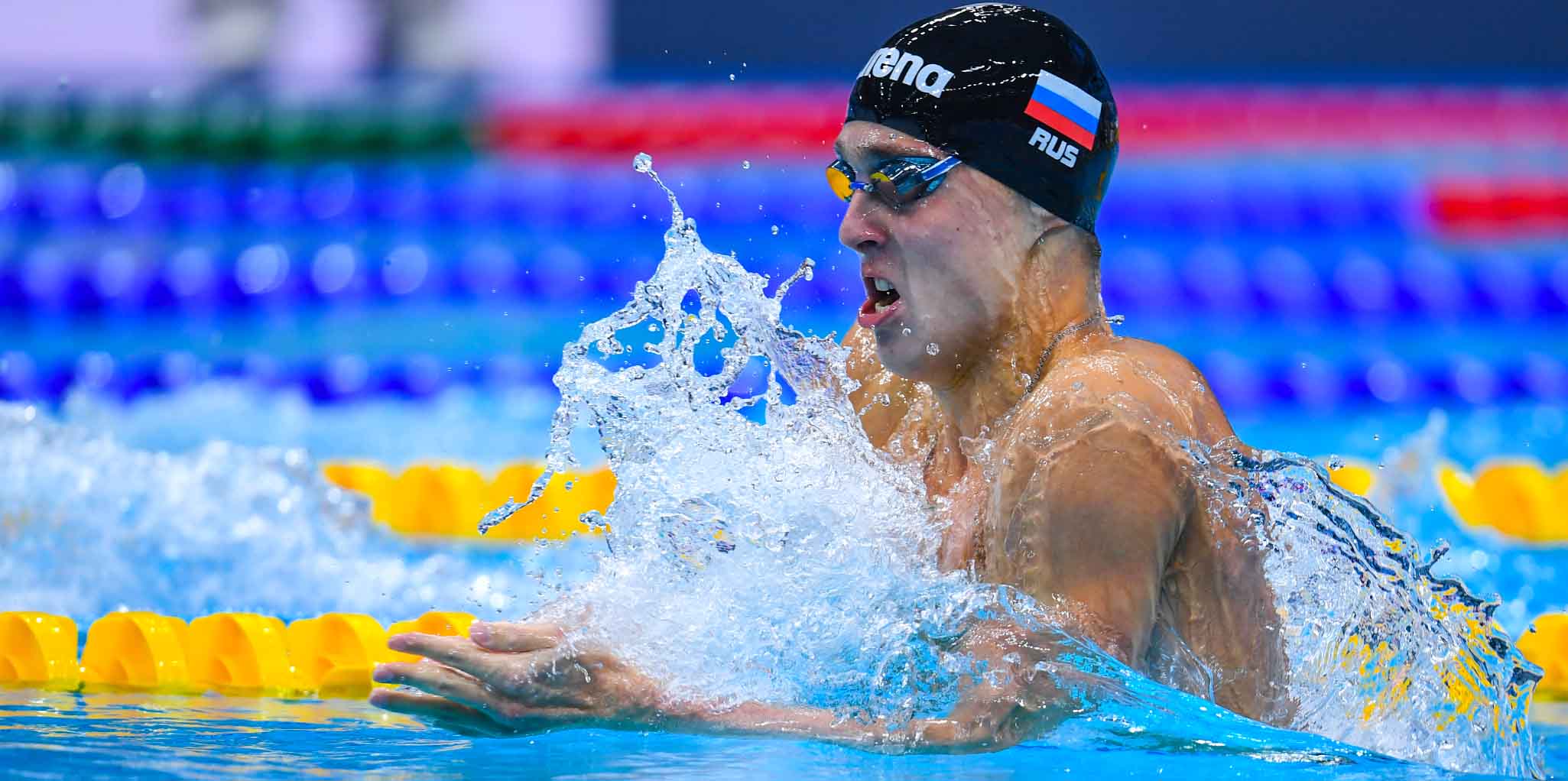Breaststroke: Some people love it, and for others, there’s no greater punishment. No other stroke divides swimmers like breaststroke does, and even among the experts themselves, there is a division: There are the sprinters, who would gladly plow through 50 or 100m, and then there are the 200m experts, who would rather elegantly glide in and out of the water like a needle going through cloth, bobbing up and down along the lane. In order to swim the 200m breaststroke with both beauty and speed, these swimmers have to keep one trick in mind: the right stroke rate at the right time.
Reigning world champion Anton Chupkov, for example, swam a particularly impressive 200m breaststroke race at the 2017 World Championships. It wasn’t just his time - 2:06,96, European Record - that was astonishing; it was the way in which he swam.
The most noticeable difference between himself and his competitors was his stroke rate. Chupkov swam with a significantly lower frequency in the first 150m, at around 30 cycles per minute. He only needed to take 34.5 strokes in the first three laps, whereas the Japanese Yasuhiro Koseki and Ippei Wantanabe achieved the same distance with 44 and 43 strokes, respectively. In the end, Koseki received silver and Watanabe, bronze. Chupnov, therefore, used a 1/4 less of the arm and leg movements for the same amount of distance.
“He needed 25% less energy to accelerate than Koseki. Essentially, he can go the first three lanes by using way less energy than his competitors,” according to the Jürgen Küchler and Jens Graumnitz, sports analysts from the Leipzig Institute for Applied Training Sciences (IAT), who provided the information for this article.
Chupkov put his saved energy to good use at the end of his last lap against his Japanese competitor, Koseki. At the 150 mark he was even lagging behind by half a second. After the turn, however, he swam with a much higher stroke rate than his other laps, and during the last 25 meters, he made a point to accelerate. On the last 15m Chupkov’s breaststroke cycles had a frequency of 52, higher than any of his competitors during any point of the race.
With this method, Chupkov could increase his speed significantly in the last lap. He came in first, eight-tenths to a whole second before his competitors Koseki and Watanabe, taking home the World Championship gold medal. Here's how he did it:
| lap 1 | lap 2 | lap 3 | lap 4 | |||||
| 10-20m | 35-45m | 55-65m | 85-95m | 110-120m | 135-145m | 155-165m | 185-195m | |
| Chupkov (2:06,96) | ||||||||
| stroke rate (cycles / min) |
31 | 27 | 30 | 30 | 36 | 30 | 43 | 52 |
| number of cycles | 10,5 | 12 | 13 | 21 | ||||
| time in s | 29,65 | 32,66 | 32,66 | 31,99 | ||||
| Koseki (2:07,29) | ||||||||
| stroke rate (cycles / min) |
41 | 36 | 35 | 33 | 34 | 34 | 36 | 46 |
| number of cycles | 14 | 15 | 15 | 19 | ||||
| time in s | 28,59 | 32,60 | 33,32 | 32,78 | ||||
| Watanabe (2:07,47) | ||||||||
| stroke rate (cycles / min) |
37 | 34 | 32 | 32 | 35 | 37 | 43 | 49 |
| number of cycles | 13 | 14 | 16 | 22 | ||||
| time in s | 28,96 | 32,59 | 32,91 | 33,01 | ||||
.
A crucial question remains: How can someone be so fast with so few strokes and still swim with power and elegance? Unlike other strokes, the speed during one cycle in breaststroke can vary a lot. As the athlete has to bring his or her arms from chest to front under the water, he or she is constantly hitting the breaks during the race. If an athlete swims at a lower rate during the 200m race, the gliding phases get longer and there are even less propulsive phases.
In breaststroke, it’s most important to minimize the water resistance during the glide that will slow the swimmer. The decisive factor is the position of the body in the water; either close to the surface or deep underneath. That’s when the difference between sprinters and 200m swimmers becomes clear: the sprinters swim very close to the surface, bringing their head and shoulders barely below the water. The 200m swimmers have to make sure that when they are not using their legs or arms in a cycle, their body parts aren’t accumulating water resistance during the stroke.
When the swimmer’s torso is accelerated forward during a kick, he or she creates a wave. Then, when the swimmer extends the core muscles and brings both arms forward, he or she has the chance to dive under the wave was just made. If the swimmer doesn’t do this, he or she has to carry the water weight with them forward during the cycle. The propulsion through the kick accelerates not just the body but also the wave, and dragging that water weight through the cycle wastes a lot of energy.
A similar situation presents itself when the swimmers arms propel the body. In this phase of the cycle, the swimmers legs are inactive. This doesn’t mean, however, that they should just be hauled through the water. At this moment, there is another wave near the hip, and during the arm pull, the swimmer can lower his or her hip bellow that wave. That way the swimmer can avoid carrying extra water weight with them. We can look to the World Champion to see the move in action. The IAT analysts confirmed, “The Russian swimmer, Chupkov, is a model for this move.” His hip movement during the pull is visible in this picture:

By making sure that as little energy as possible is wasted to the water resistance during the glide phases, more energy can be saved and used to achieve the ultimate goal: to move the body as quickly as possible through the water. This way it is possible to use few but powerful strokes and still achieve a high speed while retaining enough energy to accelerate during the last lap of the 200m. To see how this plays out in real time, follow this link to the 2017 Swimming World Championship Finals:

